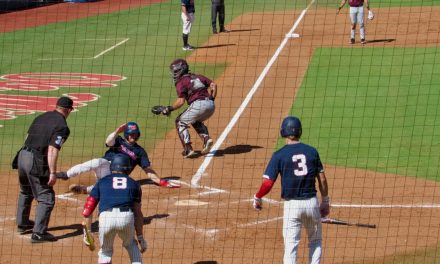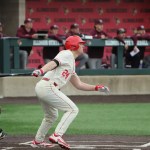
SEC details procedures for Football Medical Observer program

On Wednesday the Southeastern Conference detailed the procedures it will introduce for the new Football Medical Observer program in order to comply with the experimental rule placed in effect by the NCAA for the 2015 season.
The Football Medical Observer program was proposed by the SEC and Big Ten and allows medical observers to monitor games and notify game officials when a player appears to have suffered a head or neck injury.
According to the press release from the SEC, the program will begin with season opening games on September 3. A qualified medical professional will be in attendance and “serve as an independent medical observer for all conference contests and all non-conference contests conducted at a home site (including neutral site facilities where the SEC institution plays an annual game.)”
The conference has contracted with Champion Sports Medicine to administer the Football Medical Observer program.
The medical observer will view games from the instant-replay booth and will use video monitors to track potential injuries. If the observer suspects a head or neck injury, he or she may direct the instant-replay official to contact the referee to stop the game and remove the player for evaluation by medical staff.
Following its proposal by the SEC and Big Ten, the rule was recommended by the NCAA Football Rules Committee before its approval by the Playing Rules Oversight Panel on July 16.
How the Football Medical Observer Program works
The procedures outlined by the SEC include the following:
In the event the medical observer has clear visual evidence that a player displays obvious signs of disorientation or is clearly unstable due to head or neck injury, and it becomes apparent that the player will remain in the game and not be attended to by the team’s medical or athletic training staff, then the medical observer shall take the following steps:
- If the player does not receive medical attention, alert the replay officials immediately and identify the player by his team and jersey number;
- Contact the medical staff of the player involved and advise that the player appears to be in need of medical attention and the basis for the stoppage.
Upon being notified by the medical observer, the following will then take place:
- The replay official will immediately notify the referee over the wireless crew communication system. The Referee or any other official shall immediately stop the game while the ball is dead, go to the player in question, and follow all procedures as outlined in Rule 3 of the NCAA playing rules concerning players and injury timeouts.
- The head coach will be notified of the reason for the injury timeout, and the referee will make the following announcement: “Time Out … Medical Stop.” The referee shall not announce or identify the player who is being removed from the game.
- Once removed from the field, the team medical staff shall conduct an evaluation of the player. The return to play decision will be made by the institution’s medical staff consistent with the institution’s protocols and Rule 3-3-5 of the NCAA playing rules concerning injury timeouts.
- A team may not deliberately initiate these procedures to stop play unnecessarily, to prolong or delay the medical stoppage, to improperly take advantage of a stoppage in play, or to influence the actions of the medical observer.
SEC Commissioner Greg Sankey praised the rule, saying:
The medical observer is a new effort intended to further enhance the support of student-athletes’ well-being. The observer will provide another set of eyes watching the field from a different perspective and providing a complement to the outstanding athletic medicine staffs already employed by our institutions.
The NCAA’s Football Rules Committee is requesting that conferences provide feedback about the experimental rule at its February, 2016 meeting, which could ultimately lead to the medical observer rule becoming permanent.






















